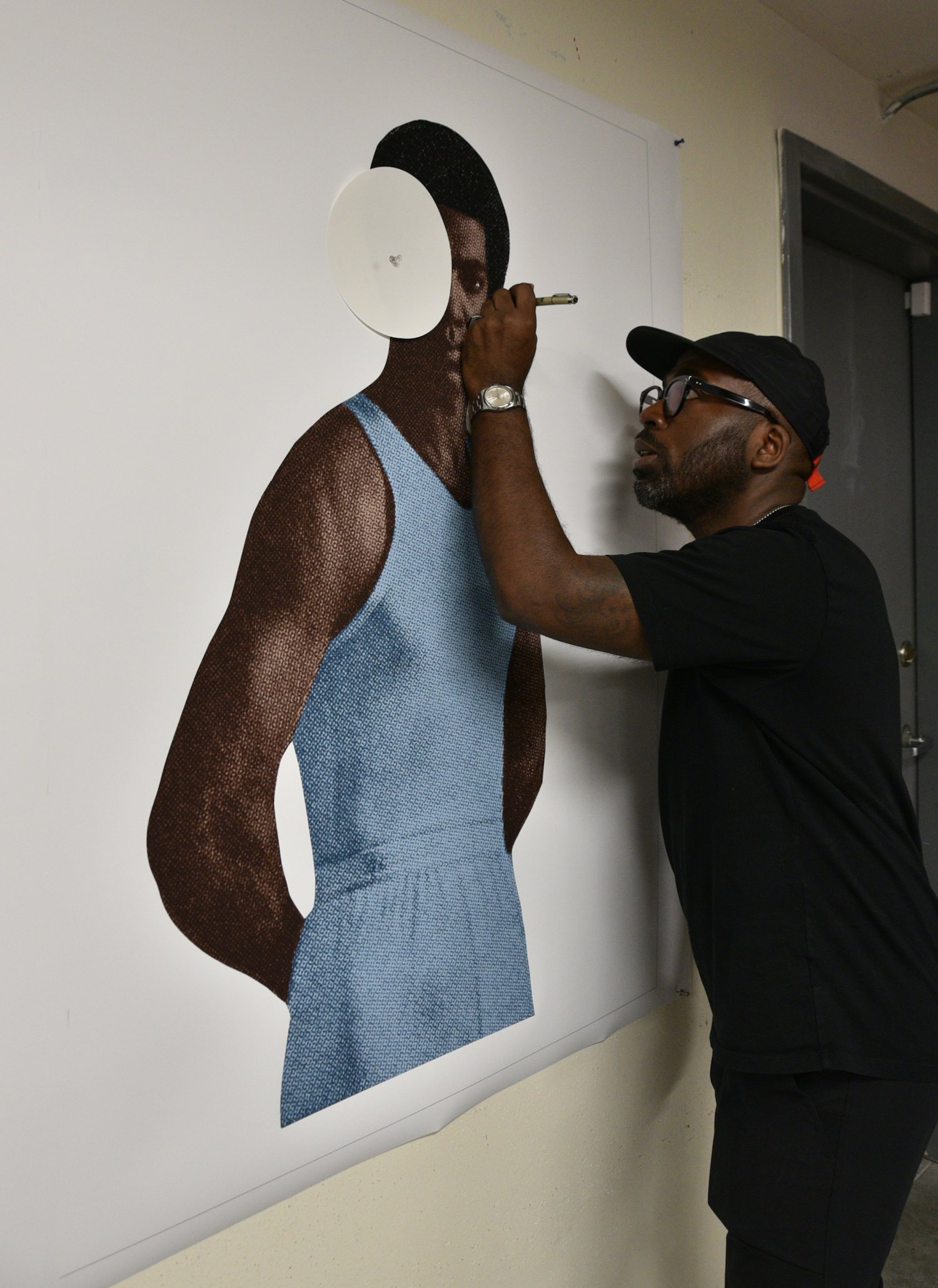
Derrick Adams is keeping busy both inside and outside the studio. The Baltimore-born, Brooklyn-based artist became famous for his “Floater” series, which depicts Black people of all ages in moments of leisure and joy. In recent years, he has worked to facilitate those moments for others beyond the studio, particularly with the development of the Last Resort Artist Retreat, an invitation-based residency that promotes and prioritizes rest for Black creatives.
This week, a monumental work by the artist is on view at the International Fine Print Dealers Association (IFPDA) Print Fair at the Javits Center in New York. Adams was chosen to create the second annual site-specific installation. Titled Eye Candy, it draws on the “Floater” series and incorporates printmaking as well as three-dimensional elements. It will be unveiled on the VIP preview day on October 27 and remain on view until the fair closes on October 30.
The impetus behind the site-specific commission was “a desire to showcase printmaking in a way that can transcend the frame,” IFPDA executive director Jenny Gibbs said in a statement.
“I decided to create a work that I’ve been imagining for some time as a large-scale immersive five-panel work,” Adams said. The piece is inspired by a vintage male underwear advertisement. The transformed image and installation exaggerate the provocative nature of the source imagery.
We caught up with Adams to learn more about his studio practice and get a glimpse inside.
Can you send us a snap of the most indispensable item in your studio and tell us why you can’t live without it?
In order for me to adjust to the work day I need a good sound system, curated playlist, and proper lighting to get me motivated.
Image courtesy of Derrick Adams.
What is a studio task on your agenda this week that you are most looking forward to?
This week, I’m continuing with the development of my current series and enjoying every moment.
Who are your favorite artists, curators, or other thinkers to follow on social media right now?
I don’t have a favorite curator or one that I can identify as such offhand. Artists and work I’m most drawn to are Bob Thompson, Robert Colescott, David Hammons, Emma Amos, and Mickalene Thomas. Regarding thinkers, one of my favorite IG pages is Girl Gone Golden/Ancestral Archivist.
Is there a picture you can send of your current work in progress at the studio?
Detail of an in-process site-specific installation. Courtesy of Derrick Adams Studio.
When you feel stuck while preparing for a show, what do you do to get unstuck?
I rarely ever get stuck, there’s so much I can talk about through my creative output. I think of the people who occupy the urban spaces around me as my source material, so if anything I wish I had more time to capture them all.
What trait do you most admire in a work of art? What trait do you most despise?
I look for sincerity and genuine expression in an artwork. I enjoy imagination and purposefulness in all areas of art making. Although most artists desire to be able to thrive from the support of selling their work, I’m least interested in works that are missing these important traits.
A selection of family photos from the artist Jacob Lawrence. Image courtesy Derrick Adams.
What images or objects do you look at while you work? Share your view from behind the canvas or your desktop—wherever you spend the most time.
My family is the biggest inspiration for me and my production. Even if they aren’t subjects in my work. Their experiences form the valuable systems embedded in the core of my idea of representation. How the Black people I know would want to see themselves and their humanity represented in my art.
What is the last exhibition you saw that made an impression on you and why?
[Robert] Colescott at the New Museum. He’s a rule-breaker and a great model of “I can show you better than I can tell you.”
What made you choose this particular studio over others?
As the work grows, so should the studio. Every studio situation I’ve had so far has been productive. You make what you can in the space you have until you outgrow it. Then try to move onto another if you can.
Describe the space in three adjectives.
Open, organized, and a vibe!
How does the studio environment influence the way you work?
The studio environment is what you make it. My studio is my workspace. I go to work when I’m here.